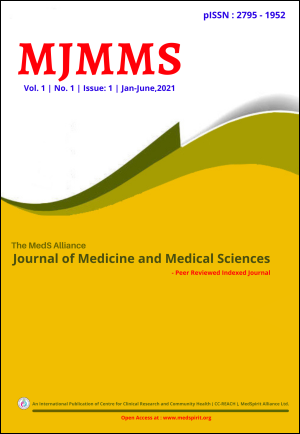Prevalence and Associated Factors of Dental Caries among Basic School Children in Kathmandu Metropolitan City, Nepal: A Cross-sectional Study
DOI:
https://doi.org/10.3126/mjmms.v1i1.42955Keywords:
Dental caries, oral health, prevalence, school healthAbstract
INTRODUCTION: Oral health problems of school children are one of the most common health related problem in the world. The prevalence of dental caries is significantly higher in school children. In Nepal, the morbidity of dental caries is very high among school children compared to other age groups. Dental caries is neglected at initial stages in children, but when the disease becomes progressive the treatment options being one of the most expensive and unaffordable. This study sought to identity the prevalence and associated risk factors of dental caries among basic school children age group from 6-12 years.
MATERIALS AND METHODS: Analytical cross-sectional study design was carried out among school children. . A semi-structured questionnaire was developed and face to face interview method was used to collect information from two public schools and two private schools of Kathmandu metropolitan City. Purposive sampling technique was applied. DMFT (Decayed, Missed, Filled, Teeth) index was adopted to measure mixed dentition, and also to assess the oral health status of school children. The collected data was entered and analyzed using IBM SPSS-20.
RESULTS: Among 274 participants, there were equal number of female and male students (Female: 137, Male: 137), likewise the number of participants from public and private school was also equal. The prevalence of dental caries among school children was found to be 55.84% and there was significant association between frequency of brushing with dental caries (p=0.001). 176 (64.2%) of the participants consumed normal food, 56 (20.4%) consumed junk food and 39 (14.2%) consumed spicy food. The consumption of different food types played a significant role in the occurrence of dental caries.
CONCLUSIONS: Frequency of brushing and types of food consumption are significantly associated with the higher prevalence of dental caries among school children. Regular dental check-up and good brushing practice can reduce the prevalence of dental caries in school children. Hence, continuous oral health programs including demonstration of proper brushing technique along with oral health awareness programs at school can help to reduce the burden of dental caries among school children.
Downloads
Downloads
Published
How to Cite
Issue
Section
License
Copyright (c) 2021 Mahendra Giri, Shailesh Kumar Pandit, Hari Prasad Oli, Sujata Giri

This work is licensed under a Creative Commons Attribution-NonCommercial 4.0 International License.




